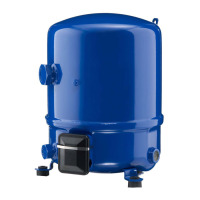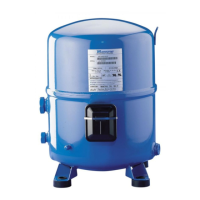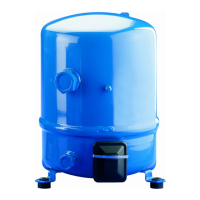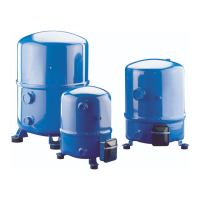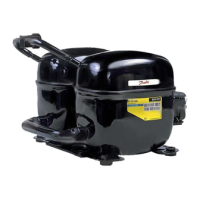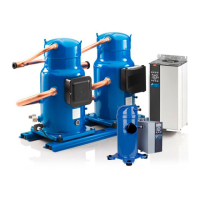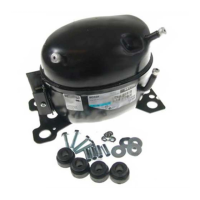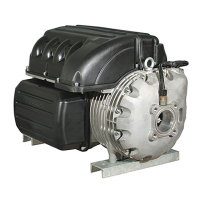Maneurop® NTZ compressors have
been designed and quali ed for sta-
tionary equipment using standard al-
ternating power supply. Danfoss does
not warrant the compressors for use
on mobile applications such as trucks,
railways, subways, ships etc.
These selection and application guide-
lines concern single compressors
only. For guidelines on manifolding
Maneurop® NTZ compressors, please
refer to literature called "Parallel Appli-
cation Guidelines".
16
SYSTEM DESIGN RECOMMENDATIONS
Piping design Oil in a refrigeration circuit is required
to lubricate moving parts in the com-
pressor. During normal system opera-
tion small oil quantities will continu-
ously leave the compressor, with the
discharge gas. Therefore, the system
piping shall be designed in a way
which allows a good oil circulation,
avoiding oil being trapped in the
system and ensuring a constant oil
return to the compressor. As long as
the amount of oil circulating through
the system is small it will contribute to
good system operation and improved
heat transfer e ciency.
Lubricant getting trapped in the
evaporator or suction lines will a ect
system performance and will ulti-
mately lead to compressor lubrication
failures. Where a poor oil return situ-
ation exists, adding lubricant will not
help safeguard the compressor. Only
a correct piping design can ensure
adequate oil circulation maintaining
safe oil level in the compressor.
Suction line Horizontal suction line sections shall
have a slope of 0.5% in the direction
of refrigerant ow (5 mm per meter).
The cross-section of horizontal suction
lines shall be such that the resulting
gas velocity is at least 4 m/s. In vertical
risers, a gas velocity of 8 to 12 m/s is
required to ensure proper oil return.
A U-trap is required at the foot of each
vertical riser. If the riser is higher than
4 m, additional U-traps are required for
each additional 4 meters.The length of
each U-trap must be as short as pos-
sible to avoid the accumulation of
excessive quantities of oil (see gure
below).
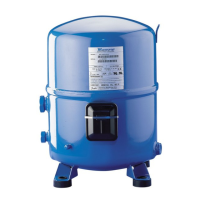
